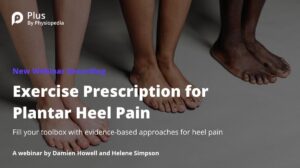Pain on Bottom of Heel: Too Much Big Toe Motion
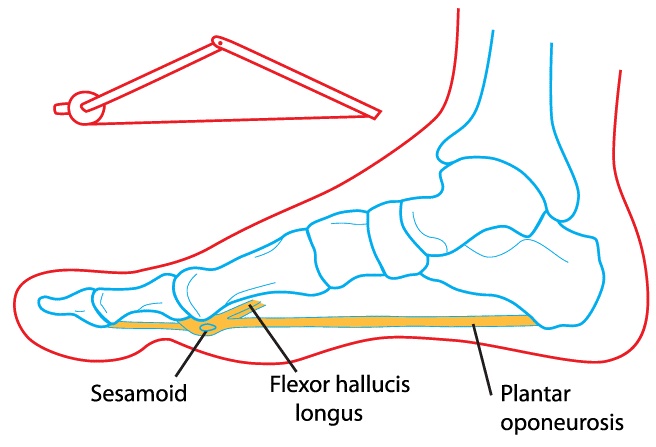
Pain on the bottom of the heel (Plantar Heel Pain) is a complex problem with variable diagnoses and explanations. And with variable diagnoses there should be variations in treatment. Unfortunately, the common treatment recommendations do not recognize such variability. For example, the universal suggested treatment for plantar heel pain is calf stretching and stretching of the plantar fascia but, not all plantar heel pain deserves stretching exercises.
Not all pain on the bottom of the heel is the same, and not all pain on the bottom of the heel is plantar fasciitis. There are other tissues that can be injured besides the plantar fascia. It could be a tendinopathy of the intrinsic muscles of the foot. It could be calcaneal fat pad injury
More important than identifying the tissue diagnosis is identifying how a tissue has been subjected to abnormal and excessive forces. What movements or activities are contributing to the injury?
The phase of walking or running when the foot is on the ground is called stance phase. Stance phase is divided into three phases.
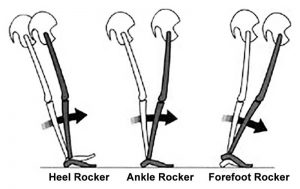
The first phase has been given different names: heel rocker, foot strike, or initial contact. The primary activity during the heel rocker is absorbing force. If plantar heel pain occurs during heel rocker, it is likely there is a calcaneal fat pad dystrophy and intervention needs to determine why the painful side is being subjected to greater shock, and interventions which improve shock absorption such as new shoes or heel cushions are indicated.
The second phase is called ankle rocker, mid stance, or loading response. If plantar heel pain occurs during ankle rocker, it’s likely there is a strain of the plantar fascia and/or intrinsic foot muscles. The primary function during ankle rocker is to provide stability and postural support. Often plantar heel pain is associated with prolonged standing. Intervention needs to determine why the painful side is being subjected to greater loading. An Intervention which decreases load, like using shock mats to stand on, and improving stability such as fresh shoes, shoe inserts, and strengthening exercises for the intrinsic muscles of the foot are indicated.
The third phase is forefoot rocker, terminal stance, or heel off to toe off. The primary function during forefoot rocker is propulsion forward and energy conservation. Plantar heel pain that occurs during the forefoot rocker is likely present in runners and athletes. The intrinsic foot muscles are actively shortening to raise the arch and at the same time are actively lengthening across the big toe joint absorbing force. Studies have shown individuals with plantar heel pain have excessive motion occurring at the big toe joint. An Intervention which improves stability, increases stiffness, strengthening of the intrinsic foot muscles by using a shoe with a stiffer sole shoeor shoes with rocker soles are indicated.
The following is a brief discussion of plantar heel pain that occurs when there is too much motion in the big toe joint during forefoot rocker.
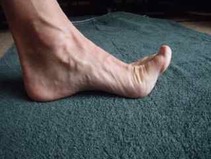
A self-assessment can be done to determine if there is too much movement in the big toe joint.
Evaluation by a healthcare professional can confirm your self-assessment. Standing actively, lift/flex the big toe off the ground. More than 45° of motion is considered too much. If there is more than 5° of motion on the painful foot compared to the non-painful foot this also suggests too much movement is occurring.
Standing active big toe lift above
Standing or sitting, use your thumb to lift the big toe off the ground. The longitudinal arch should rise and the foot move in direction of supination.
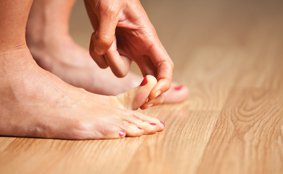
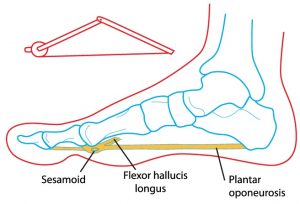
Self-assessment of Windlass Effect illustrated above. Arch should rise and foot supinate
This movement is called the Windlass Effect and it is a normal response. If you fail to see the longitudinal arch rise and the foot supinates, there is too much movement and this is a bad thing. Both of these tests may elicit the plantar heel pain.
If you see evidence of there being too much movement of the big toe joint,
Do not do stretching exercises for the plantar fascia
Do not use a Strasburg Sock or night splints which stretch the big toe
Do not sit with the ankle in relative plantar flexion and big toe in maximal dorsiflexion
Do not do kneel with big toe in position of maximum dorsiflexion
Do not do bare foot calisthenics that stress the big toe in position of maximum dorsiflexion (prone planks, pushups, burpees)
Do not use shoes with flimsy flexible soles or wear, open back sandals
Avoid or minimize going barefoot.
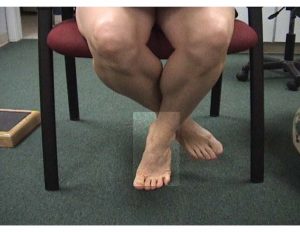
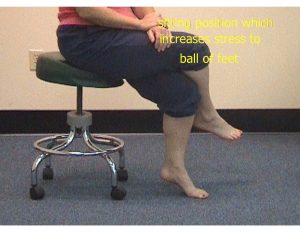

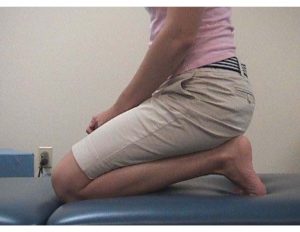
Do not sit like illustrated above

Do not do exercise barefoot as illustrated above
If you see evidence that there is too much movement of big toe joint,
Do select shoes with stiffer soles or rocker bottom type soles
Do sit with foot flat on ground or foot stool
Do consciously engage the toe downward into ground/shoe when walking, actively lift heel off ground using foot muscles
Do progressive isometric strengthening exercises for the intrinsic muscles of the foot (Short Foot Exercise, Piano movement exercise with toes)
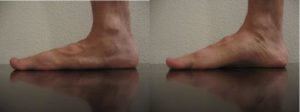
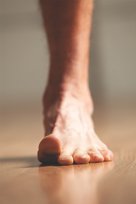

On left foot, relaxed on right, isometric short foot Piano toe exercise
If there is NO evidence of excessive movement of big toe and failure of Windlass than the above suggestions are not appropriate. Evaluation by a healthcare professional is needed to determine what other variation of plantar heel pain is occurring.
A on demand-video webinar exploring this topic is available at Plus by Physiopedia entitled “Exercise Prescription for Plantar Heel Pain Webinar”
Use this code – “Damien25” for a 30% discount to access this webinar as well as the more than 500 continuing education webinar courses available at Plus by Physiopedia. This is the link http://bit.ly/DAMIEN25 with the 30% discount code embedded.
Damien Howell Physical Therapy – 804-647-9499 – Fax: 866-879-8591 At-Home, At Office, At Fitness Facility I come to you, I do home visits Damien@damienhowellpt.com

